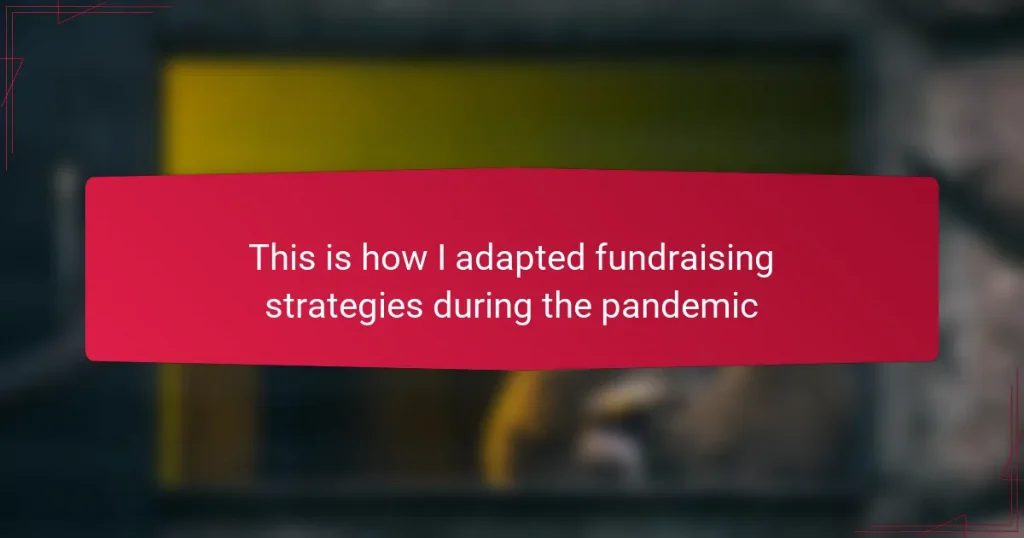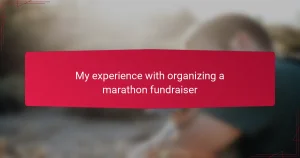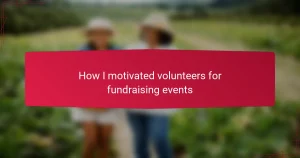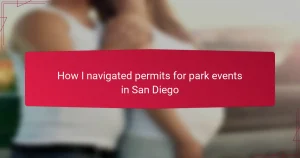Key takeaways
- Transitioning to virtual fundraising strengthened community connections and engagement during the pandemic.
- Utilizing digital tools, social media, and community partnerships was essential for adapting fundraising efforts.
- Regular communication and celebrating milestones helped maintain enthusiasm and trust among supporters.
- Creative strategies like live-streamed events and personalized outreach fostered deeper relationships with donors.
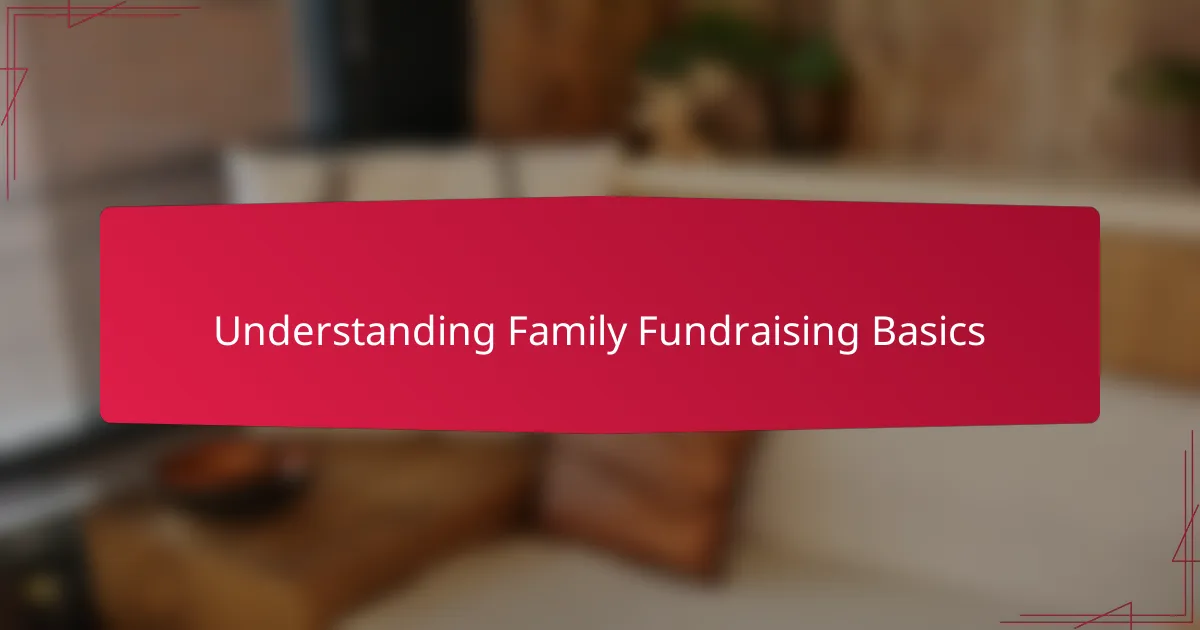
Understanding family fundraising basics
Understanding the core principles of family fundraising helped me stay grounded during the pandemic. At its heart, family fundraising is about community connection and mutual support. I realized early on that clear communication and genuine engagement make all the difference when rallying loved ones around a cause.
| Traditional Family Fundraising | Adapted Pandemic Fundraising |
|---|---|
| In-person events and gatherings | Virtual meet-ups and online events |
| Cash and check donations | Digital payments and crowdfunding platforms |
| Physical flyers and word-of-mouth | Social media outreach and email campaigns |
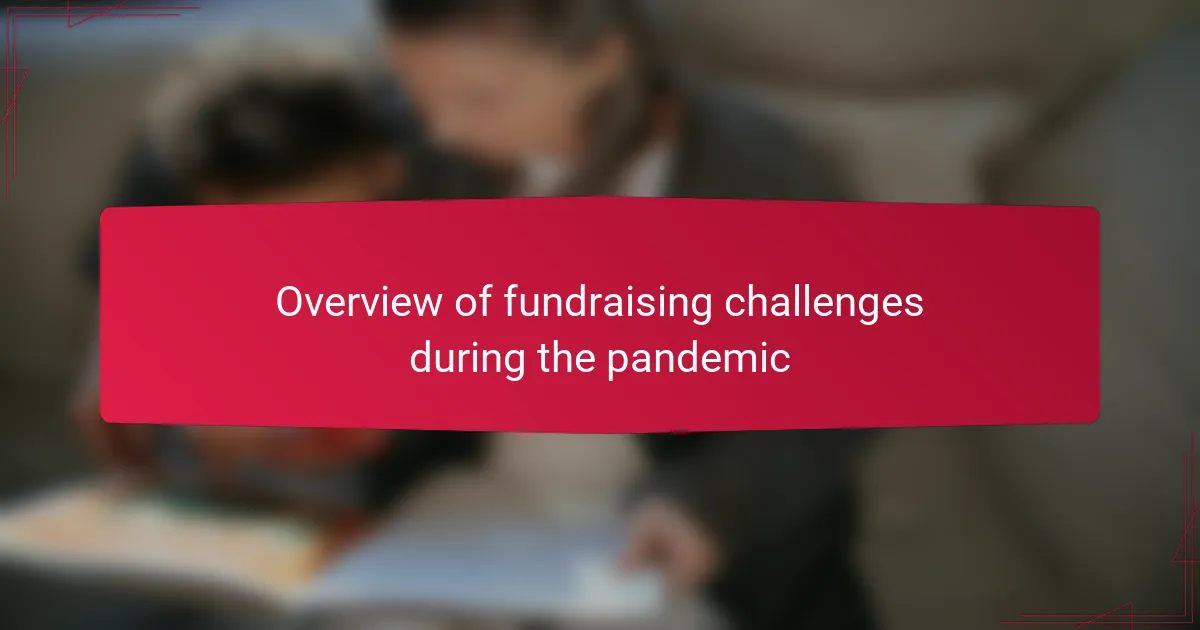
Overview of fundraising challenges during the pandemic
The pandemic threw a wrench into the usual flow of family fundraising, especially with in-person events suddenly off the table. I remember feeling stuck at first—how do you bring people together when you can’t actually gather? It became clear that relying on face-to-face connections was no longer an option.
One of the biggest hurdles was shifting everyone’s mindset from handing over cash or checks to navigating digital payments. Honestly, it was a learning curve—not just for me, but for many family members who weren’t used to online tools. Have you ever watched someone hesitate over clicking a link for a donation? I certainly have, and it reminded me how important patience and encouragement became during this time.
Another challenge was keeping the momentum going without the usual physical reminders like flyers or casual in-person chats. I found myself brainstorming new ways to keep the community engaged. It wasn’t just about switching to social media and emails; it was about reimagining how we connect emotionally when we can’t be together in person. That felt like an emotional tug-of-war but also an opportunity to grow.
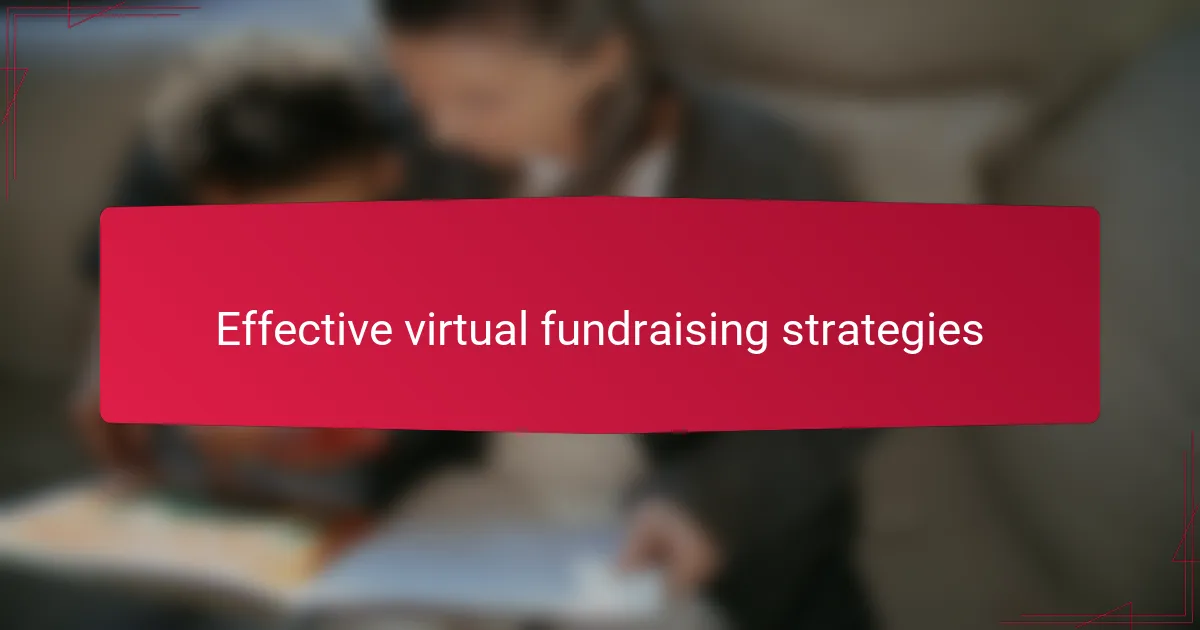
Effective virtual fundraising strategies
Shifting to virtual fundraising felt daunting at first, but I quickly realized how powerful online connections can be. I remember the first virtual event I hosted for our San Diego family fundraiser—the energy was different but just as heartfelt. Seeing people from all over join in, sharing stories and contributing, reminded me that distance doesn’t weaken our community spirit.
One strategy that really worked was creating multiple engagement points throughout the event to keep participants involved and motivated. Based on my experience, here are some effective virtual fundraising tactics that helped us not only meet but exceed our goals:
- Host live-streamed events with interactive Q&A sessions to maintain real-time engagement
- Use social media challenges to encourage sharing and donations among friends and family
- Incorporate virtual auctions featuring donated items from local businesses to support the community
- Send personalized thank-you emails and video messages to donors to foster deeper connections
- Offer tiered donation levels with clear impact descriptions to help donors see the significance of their contribution
- Leverage storytelling by sharing recipient testimonials during the event to evoke empathy and increase generosity
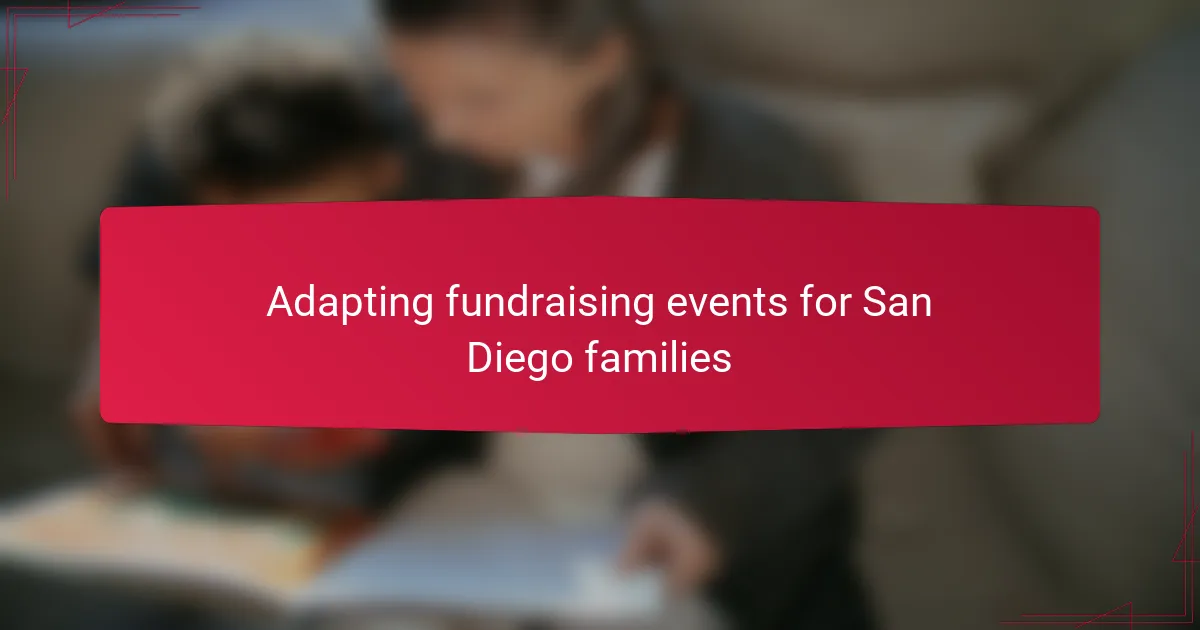
Adapting fundraising events for San Diego families
Adapting fundraising events for San Diego families meant thinking outside the box as in-person gatherings became a challenge. I found that transitioning to virtual events was more than a necessity – it was an opportunity to connect with families in new, meaningful ways despite the distance. It was heartwarming to see how community spirit stayed strong when everyone participated from their own homes.
| Traditional Fundraising Events | Adapted Virtual Fundraising Events |
|---|---|
| Local park or community center gatherings | Online platforms like Zoom or Facebook Live |
| Face-to-face interaction and group activities | Interactive online games and virtual meet-ups |
| Physical ticket sales and donations | Digital ticketing and online donation portals |
| Shared food and refreshments | Encouragement for families to prepare their own snacks and share virtually |
| Fixed event timing and location | Flexible scheduling with option to view recorded events later |
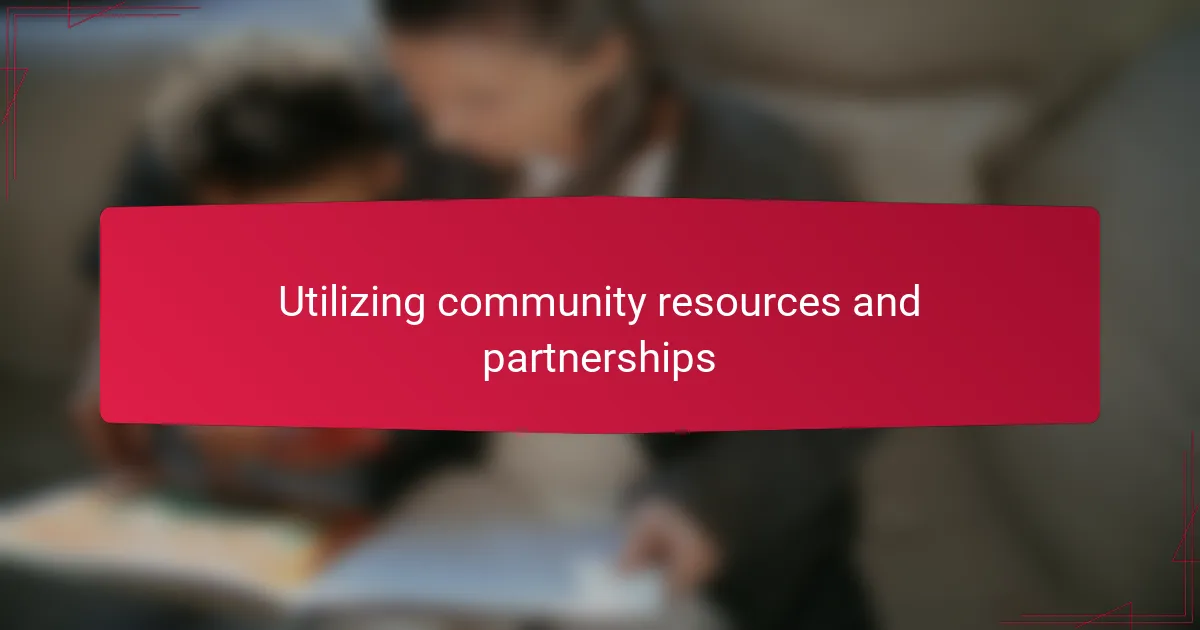
Utilizing community resources and partnerships
During the pandemic, I quickly realized that relying solely on traditional fundraising methods wouldn’t cut it. Leaning into local community resources and building new partnerships became my go-to strategy. For example, collaborating with nearby small businesses not only amplified our reach but also created a genuine sense of togetherness during uncertain times.
One partnership that stands out was working with a community center that allowed us to host virtual events. It wasn’t just about raising money; it was about sharing hope and resilience. This experience deeply reminded me how powerful it is when we pool our resources and support one another.
Key community resources and partnerships I utilized included:
– Local businesses sponsoring virtual fundraisers
– Community centers hosting online events
– Schools sharing fundraising initiatives with families
– Neighborhood groups promoting our campaigns on social media
– Collaborations with local nonprofits to cross-promote causes
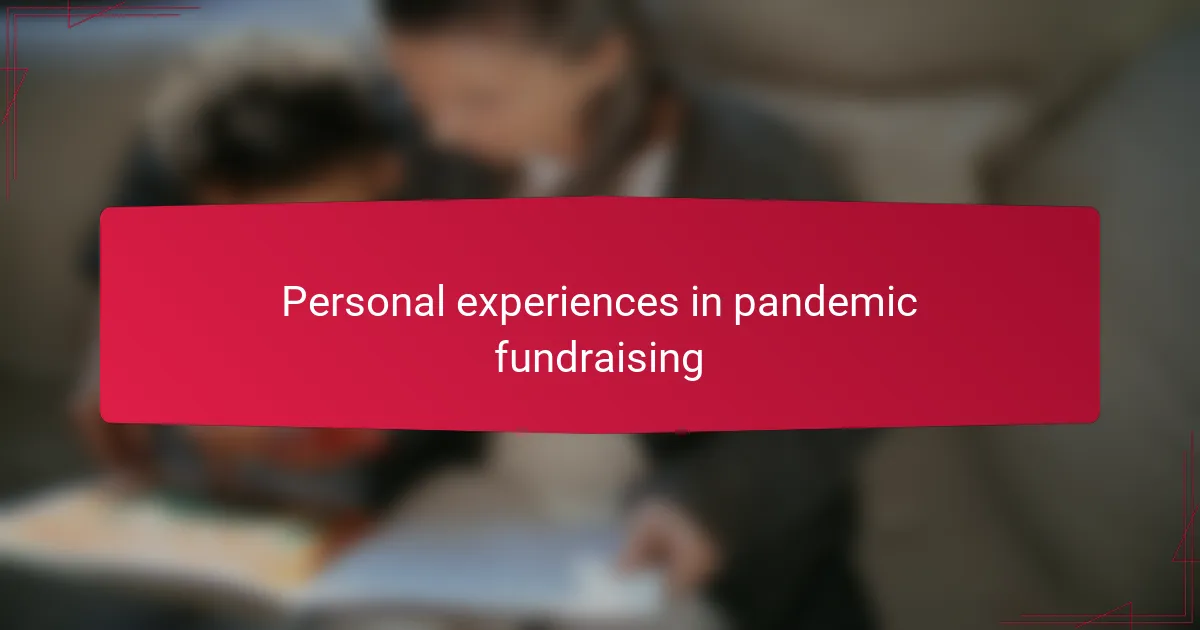
Personal experiences in pandemic fundraising
Navigating fundraising during the pandemic was a steep learning curve for me. I remember feeling overwhelmed at first, unsure how to keep families connected and motivated while we couldn’t meet in person. But adapting became a daily challenge that pushed me to think creatively and lean on digital tools in ways I hadn’t before.
Some key adjustments I made include:
– Hosting virtual family game nights to maintain engagement and fun
– Using social media live streams to share stories and updates in real-time
– Organizing contactless donation drives to ensure safety and convenience
– Creating personalized thank-you videos to keep the connection warm and sincere
– Collaborating with local businesses for online auctions and giveaways
These small shifts made a big difference, turning uncertainty into opportunities for deeper community bonds.
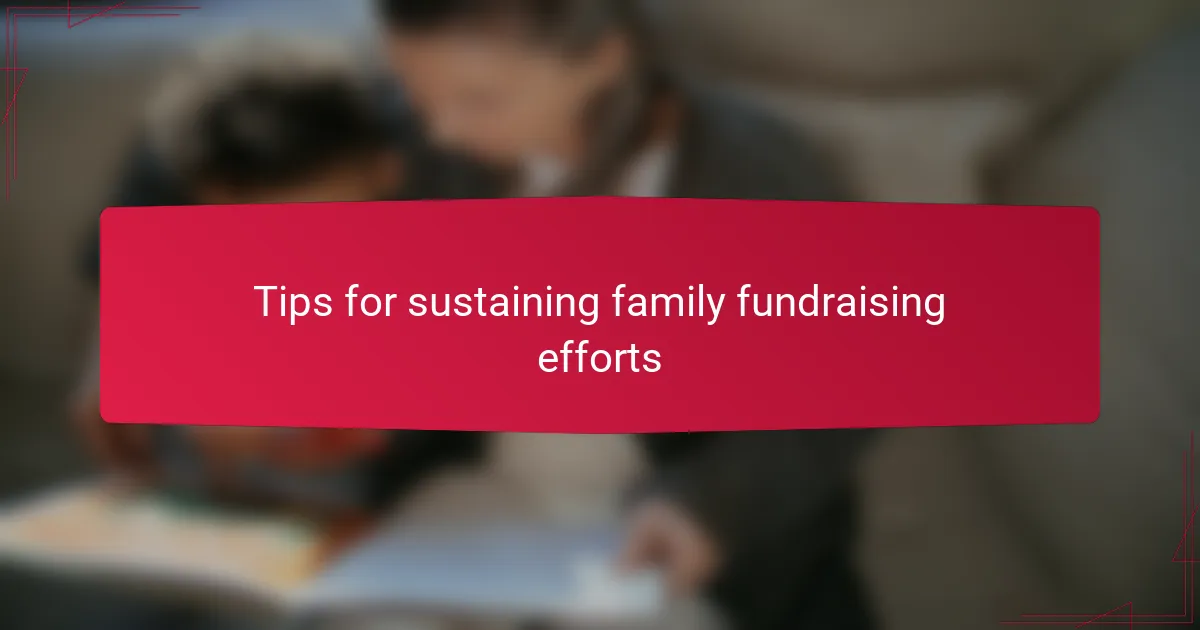
Tips for sustaining family fundraising efforts
Sustaining family fundraising efforts during unpredictable times required me to stay flexible and keep the community engaged consistently. I found that regular communication, even just sharing small updates, made a big difference in maintaining enthusiasm and trust among supporters.
One thing I learned is that celebrating every milestone, no matter how small, keeps spirits high and motivation alive. Here are some practical tips that helped me keep the momentum going:
- Schedule regular check-ins with family and supporters to share progress and challenges.
- Use social media to highlight stories behind the fundraising cause, making it personal and relatable.
- Create simple, achievable goals that encourage ongoing participation and small wins.
- Recognize and thank contributors promptly to build a sense of appreciation and belonging.
- Adapt events to virtual formats when in-person gatherings aren’t possible to maintain connection.
- Encourage family members to take ownership of different tasks to keep everyone involved and motivated.
